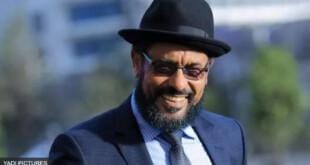Oromo surveyors estimate their population at a higher level than the state has found.
In search of recognition, a cultural group that feels like it’s been undercounted in Minnesota
is looking to calculate its exact population in the state.
The Oromo Cultural Institute of Minnesota began a survey this month to determine how many Oromo people — the largest ethnic group in the Horn of Africa, especially Ethiopia — live in Minneapolis’ Cedar-Riverside neighborhood.
The Oromo are a large portion of Ethiopian immigrants to America, said Abdissa Loke, OCIM’s executive director.
Oromo people have settled in Minnesota since the late 1970s, said OCIM President Grima Hassen, but have little representation and recognition.
Many events lack Oromo translators, which can make understanding difficult for people of Oromo heritage, Hassen said.
The new survey looks to count Oromo people to bolster recognition, he said.
Loke said the first step to solving a group’s issues in the state is to find out how many live there, but the project currently only covers the Cedar-Riverside neighborhood.
Mohamed Mohamed, executive director of the West Bank Community Coalition, said nearly 45 percent of Cedar-Riverside residents are immigrants, mostly Oromo and Somali.
Hassen said Oromo people are often
misidentified as Somali.
“[Oromo people] have different languages and cultures and sometimes even different religions,” he said.
Mohamed said the Oromo and Somali peoples also have different geographies, history and recreational activities.
“We need to be recognized as a people,” Hassen said.
The survey was started partly from a disparity found in the number of Oromo people living in Minnesota by the state’s demographic center. The OCIM counts nearly 40,000 Oromo people living in Minnesota, while the state puts the number around 8,500.
Susan Brower, the Minnesota State demographer, said the state used census surveys and public school administrative and enrollment records on languages spoken at home to
determine that nearly 18,000 identify as Ethiopian in Minnesota, she said. From this number, the number of Oromo people was determined using certain ratios, she said.
Loke said the OCIM data was gathered by extrapolating data on Oromo and Ethiopian people across America and Minnesota along with using information like the average Oromo family size.
Brower said there are many reasons the disparity might occur, like some people’s personal disinterest or distrust in the census. The census also tends to underestimate the populations of minorities in many cases, she said.
The census should have the option for identification as Oromo and not just as Ethiopian, Hassen said, adding that Oromo are the largest demographic in Ethiopia.
The ongoing survey is the first of hopefully many, Mohamed said. Funds currently allow for one survey, but with the results from the first and more funding, the OCIM wants to survey other pockets of Oromo in Minnesota.
The survey is conducted mainly by door-knocking and questioning. Hassen said the survey has experienced some difficulties so far, with some places rejecting surveyors or landlords barring access to certain buildings.
The OCIM wants to demonstrate that the Oromo people are different from Somali and other East African ethnicities, Hassen said. Not understanding that difference is misleading to both the Oromo people and the city.
“[The] main reason we are doing this survey [is because] we need a voice,” Hassen said.




